Are potato beetles destroying your garden crops? Here’s how to get rid of potato beetles naturally in your organic garden!
I remember the first time I saw a potato beetle larva. I honestly had no clue what in the world I was looking at.
This site contains affiliate links. If you make a purchase using one of these links, I may earn a commission. Please see my disclosure page for more information about cookies collected and our privacy policy.
I’d seen adult potato beetles but never a larva.
But these little pinkish red blobs were all over my tomatoes and I had to get rid of them.
In my own garden, potato beetles aren’t nearly as bad as squash bugs, but they are still a pest that I don’t want hanging around.
Luckily, there are plenty of natural ways to get rid of potato beetles!
What is a Potato Beetle?
First let’s talk about what a potato beetle (Leptinotarsa decemlineata) is. The adult potato beetle is a cream colored, hard-shelled insect, with distinctive black stripes on it’s back.
The larva is a little odd looking- sort of a hunched blob that is reddish in color with black spots along the bottom.
Like most insects, they do have wings- but are hidden under their hard shell similarly to a ladybugs’ wings.
Potato beetles will attack almost all varieties of nightshade, including potatoes, tomatoes, eggplants and other members of the Solanaceae family.
The adult bugs will lay their eggs on the underside of the host plant. They lay a lot of eggs- 30-40 per day even. When the larvae hatch they will voraciously eat your crops before heading on to the next stage of development.
Now that you know what a potato beetle is, let’s talk about how to control them and get rid of them in your organic vegetable garden.
Get Rid of Potato Beetles in Your Garden- Organically!
1. Hand pick off the bugs and eggs
This is, and always will be, my favorite method of defense when it comes to getting rid of potato beetles (and all bugs really). The most reliable way to kill potato beetles is to do it yourself. I keep a jug of soapy water in the garden specifically for this purpose
Bug picking is best done in the morning or evening- simply go through your plants and pick off any adult bugs you find and drop them into the soapy water (though chickens LOVE potato beetles, so we often pick them off into a container and feed them directly to the birds!)
Neither adult potato beetles or larva are small and they are easily found and disposed of.
Be sure to also check the undersides of the leaves for eggs. Potato beetle eggs are bright yellow and sort of football shaped. You’ll want to scratch off and destroy these eggs.
Try to do this with the least amount of damage to the leaves. You can simply squish them, brush them off into your soapy water or use very sticky tape to pick them off.
Handpicking bugs is a daily job but it’s worth it- and a great family activity!
Adult beetles can often be simply shaken off the plants. Just place a bucket or sheet of plastic under the plant and give it a shake- allowing the beetles to fall and then dispose of them.
2. Companion plant
Companion planting is one of my favorite ways to control pests in the garden. And it can be a great help when controlling potato beetles.
Two of the most common plants that help with potato beetles are bush beans and nasturtium.
Interplant rows of beans and potatoes for a mutually beneficial relationship for both crops. I plant nasturtium throughout the garden for help with lots of pests.
Other plants such as tansy, aromatic herbs, coriander, marigold, and calendula can also provide some protection and deter pests in the garden.
Learn more about companion planting with potatoes: The Best Potato Companion Plants for the Garden
3. Attract beneficial insects
The problem with most insecticides- even those labeled “organic”- is that they don’t differentiate between the good and the bad. Certain insects are very beneficial to have on your side when you are fighting pests.
Some beneficial insects that can help get rid of potato beetles are:
- Ladybugs
- Lacewings
- Soldier beetles
- Beneficial nematodes
When you companion plant with things like calendula, marigold, thyme and sage these beneficial insects will naturally be attracted to your garden. Read more about 9 Specific Beneficial Insects and How to Attract Them.
Pick up a copy of my Companion Planting Guide and Binder to help you design the perfect garden beds with companion planting in mind. Plus get a bonus guide to help you attract more beneficials to your garden!
4. Diatomaceous Earth
Diatomaceous Earth is a powder made from ground up diatoms. It works by making microscopic cuts in the exoskeleton of insects- drying them out. There are 2 types- food grade and industrial grade. You want the food grade for all of your gardening and pest needs.
DE does not work as well on adult potato beetles due to their hard shell, but it does help get rid of the larva. The larva is actually more destructive than the adults so it’s best to get rid of as many at this stage as possible.
DE only works when dry, so it’s best to apply it after the dew has dried in the midday sun. If possible sprinkle a layer directly on the bugs but you can also sprinkle a fine layer over the entire plant as well.
If you are using DE on tomatoes or eggplant, take care not to get DE on the blossoms, because it will not differentiate between a pest and a pollinator.
5. Use Row Covers
Row covers are very helpful for controlling many pests in the garden. They are particularly helpful for crops that don’t rely on pollination to grow fruits.
The row covers work just like they sound- they cover the entire row of crop effectively preventing pests from landing on and laying eggs on your plants.
If you are using them on crops like eggplant or tomato that require pollination, you will have to remove the cover when the plant flowers, but they can be effective for young plants which may not be strong enough to withstand an attack of potato beetles.
6. Use Organic Pesticides (Homemade or Bought)
I personally don’t like to spray much of anything on my garden- organic or not. But sometimes it’s a must.
Here are some organic options when it comes to spraying or treating your plants to control potato beetles.
- Bacillus Thuringiensis is a bacterial based insecticide. It’s helpful for all sorts of garden pests including potato beetles. I like it because it doesn’t affect bees or ladybugs.
- Neem Oil is helpful for controlling the larva and preventing the eggs from hatching. It’s also great for other pests such as spider mites.
- Essential Oils such as peppermint, thyme, or sage can help with pests. Learn more about how to use essential oils in the garden.
- Hot Pepper Spray: You can use powdered cayenne pepper or you can infuse with fresh peppers. Adding a little garlic and soap can help make the spray more effective.Spray in the morning or evening, not in the heat of the day.
Also, remember that your garden is only as healthy as your soil. Make sure you are planting in fertile, well amended soil. Strong, healthy plants are much more likely to fend off pests than sickly ones.
Some other tips for getting rid of potato beetles in the garden include:
- Rotating crops
- Cleaning up debris in the fall
- Planting resistant cultivars
But for the most part, starting with healthy soil and plants and staying ahead of an infestation you should have minimal loss in your garden from the potato beetle.
How to Get Rid of Other Garden Pests
How to Control Cucumber Beetles Naturally!
Companion Plants to Get Rid of Aphids Naturally!
6 Ways to Get Rid of Squash Bugs Naturally!

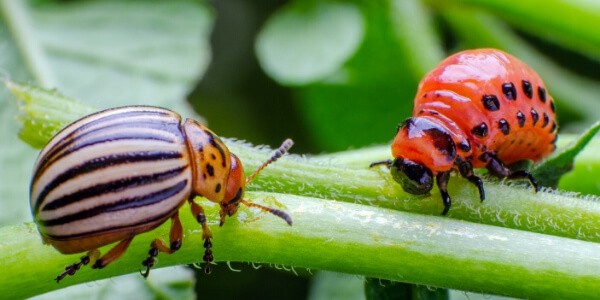
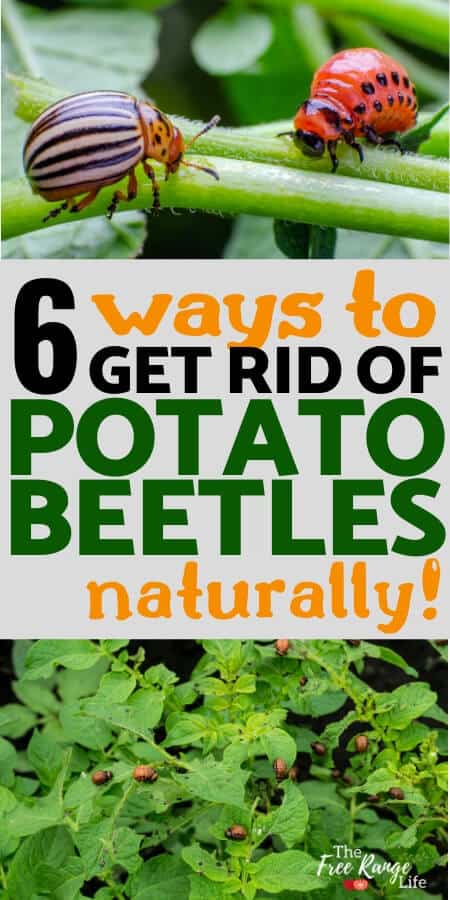
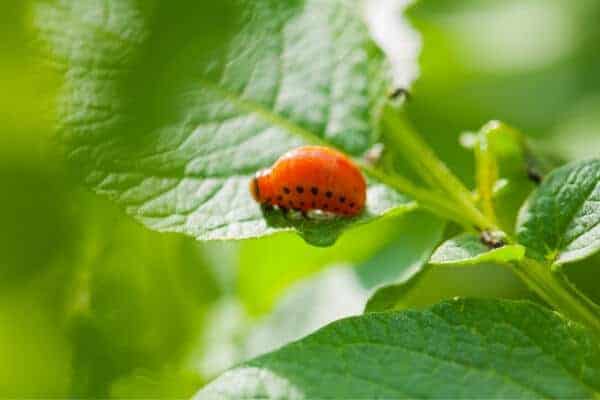
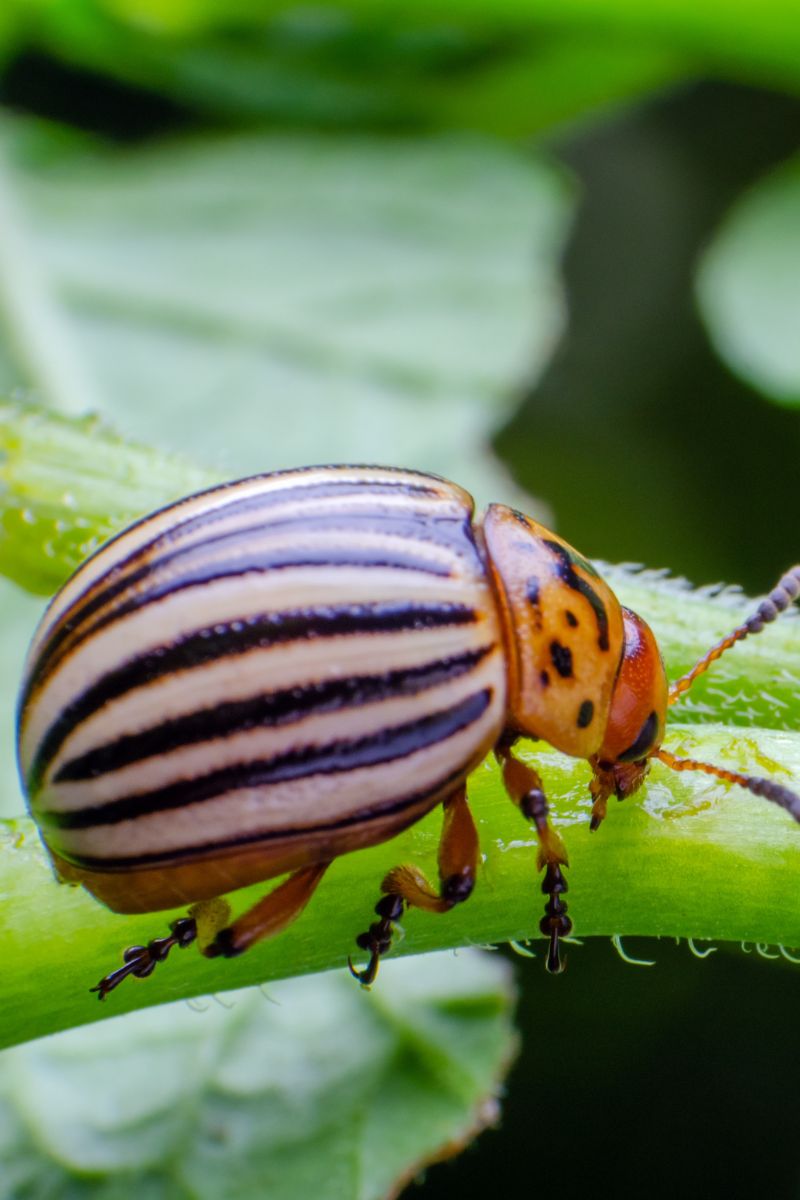
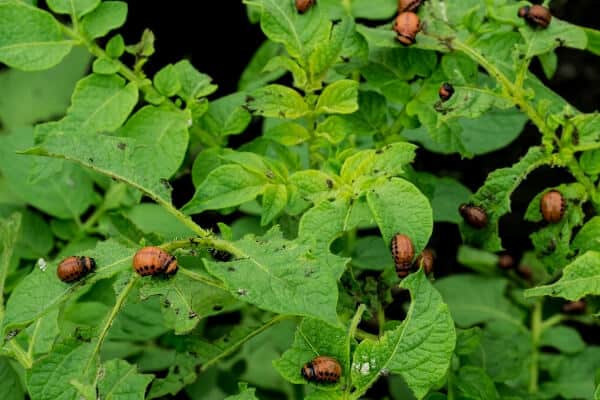
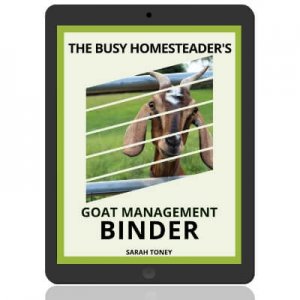
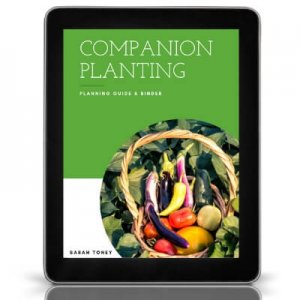
Than you for your information and advice on ridding potato bugs off our plants.
Thank you so much for the tips on Colorado potato bugs. Your articles
are so very well laid out and very informative!!
Another option is rhubarb leaf, simmer for 30 min. and then strain and use liquid to kill insects. Someone else said it worked great on potato plants and I found it worked on my herb garden as it was invaded by ants.
i sprayed a mixture of 1 cup of vinegar with 3 cups of water and tsp soap, check on the plant later in the day and now my leaves are wilting and turning brown. Have i killed my plants?
Vinegar can kill plants, yes. For pests, you don’t need vinegar.
we use vinegar blue dawn dish soap and Epson salt. This mixture kills everything ie dandelions crab grass and your grass if the wind blows. Do not put anything like this in your garden.